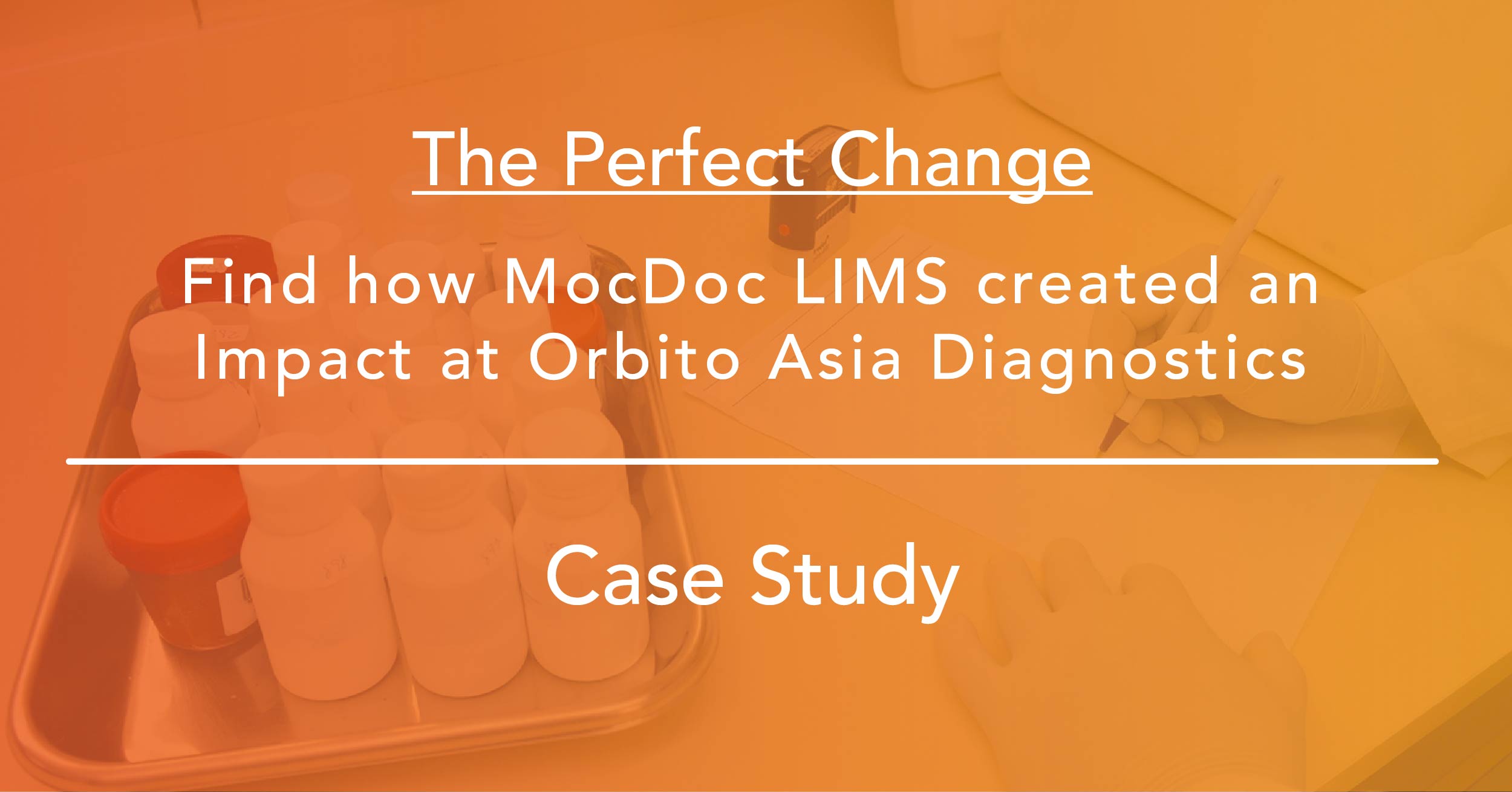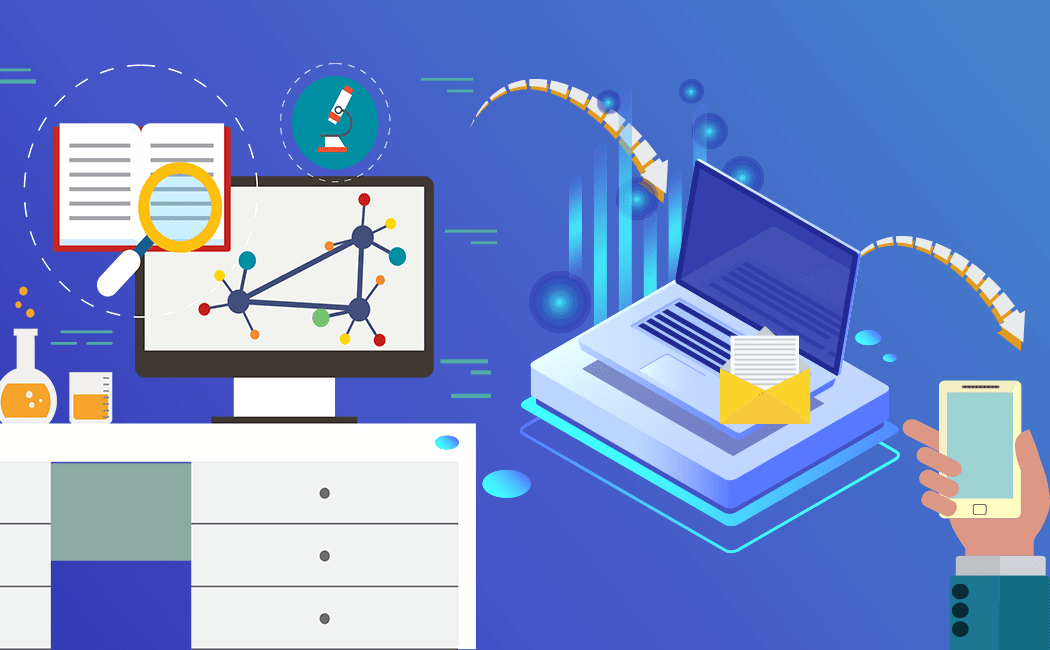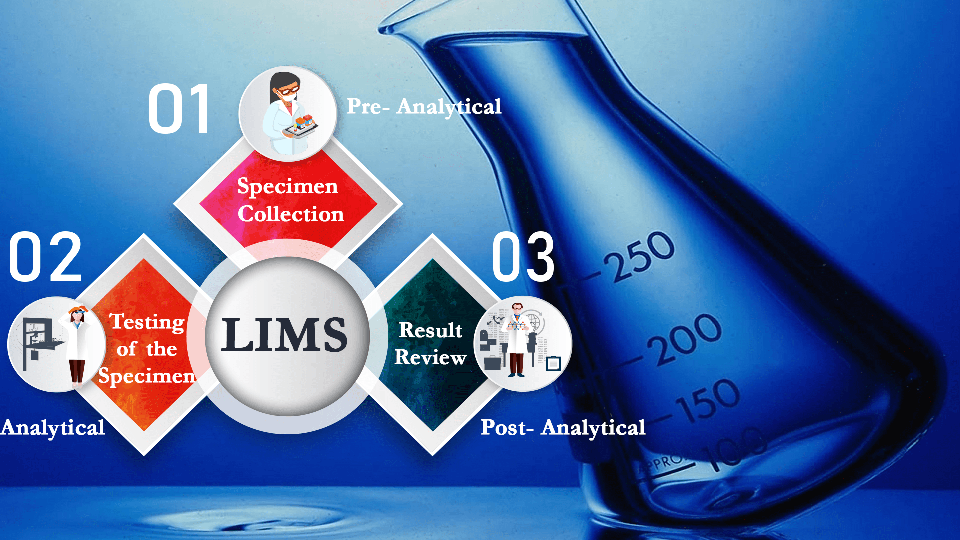MocDoc's Offerings
The Perfect Change, find how MocDoc LIMS created an impact at Orbito Asia
Published By
Keerthivasan
2019062715:47:23
Category LIMS

Introduction:
Orbito Asia Labs and Scans is a comprehensive healthcare facility for imaging and diagnostic purposes. It contains the latest infrastructure with the best medical facilities operated by experienced and certified lab technicians with support staff. They strive to provide ultimate diagnostic services to their patients at an affordable price. They operate in about 20 locations and also have many processing centers across Tamilnadu and Bangalore.
Overview:
The main reason why Orbito Asia approached MocDoc was to manage multiple collection centers in different areas, also to keep track of samples and information about the patients, since they were using offline software these operations were not possible. MocDoc LIMS provided them with the best solutions for their problems and proved to be a handy software for managing multiple lab centers.
Challenges & Solutions:
MocDoc has always produced masterly solutions to many problems arising in the healthcare industry. Here is a list of problems Orbito Asia faced and its solutions,
Adapting to technology
Orbito Asia was handling their entire management process with offline software. As the magnitude of their labs kept increasing they opted to go for online software to increase their scalability and for better automation. Ultimately a firm that prides itself in having the latest technology didn’t want an offline software to hinder its progress.
MocDoc provided them a fully integrated software known as MocDoc LIMS System which allowed them to work online also rectify all the problems that they were facing while using offline software.MocDoc LIMS also increased the data security of the patients by following a centralized data storage method(SaaS).
Managing multiple centers
Orbito Asia has multiple centers across Tamilnadu so they needed proper software to organize their centers and track samples. They also needed solutions for organizing their tie-ups with other labs for B2B modules. So they eventually needed online software to perform multi-center organizing and sample tracking efficiently.
MocDoc resolved all their problems by providing them with fully integrated software which helped them to carry out their expansions in multiple locations, and also delivered propitious results in sample tracking and managing B2B’s with which Orbito Asia has collaborated.
Avoiding duplicate registrations
Orbito Asia was following a manual entry of information regarding patient details, sample information, and center details in their previous offline software this created a situation of having duplicate entries. Also, offline software didn’t have the features to stay connected with multiple locations.
MocDoc approached them with deft solutions to rectify all the problems they previously faced. Our software supported Orbito Asia to collect all information about patients and Centers in a secure and organized manner, after which Orbito Asia has shown rapidly reduced errors in data collection and duplicate entries.
Tracking samples and result collaboration
Results for tests in Orbito Asia labs were often delayed due to a lack of features in their offline software for sample tracking, also they were facing some difficulties in tracking the revenue of their centers, outsourcing details, and their payment methods which led to a major problem in maintaining track records about company expenditures.
MocDoc provided them with a Home Collection application which precisely helped them to correct the problems in sample tracking and also helped them to reduce the turnaround time for collecting test results. For managing B2B relations MocDoc software allows them to easily track their invoices and pending payments since MocDoc is an online SaaS software we provide all results instantly without any delay.
Sending real-time updates using multimedia
Orbito Asia labs had to send regular updates to all the partner labs, marketing executives, and the patients who visit their lab. Due to the lack of a bulk messaging facility, these updates were given in the form of individual messages and emails causing a heavy workload and at times erroneous conveyance of messages.
With the help of MocDoc LIMS OrbitoAsia was able to send real-time updates of test results to the patient and also information was conveyed easily to marketing executives without any delay. The additional feature of using our software as it allows labs to also send bulk messages to their patients reducing the workload drastically.
Ultimate benefits
OrbitoAsia was able to efficiently maintain multiple Centers.
Managing and tracking samples was much easier in MocDoc LIMS.
Consistent Real-time accurate results are an added advantage.
OrbitoAsia was able to send bulk messages and e-mails also they were able to maintain Data privacy.
Reduced workload and improved efficiency in providing propitious results.
Growth outcome
Orbito Asia has gained more than 70% of customer satisfaction this year. MocDoc LIMS Software simplified its entire process through its integrated scalable solutions. OrbitoAsia evaluated 100’s software and in that, they selected MocDoc software mainly for these three reasons,
Ease of use
Best Support services
Budget-Friendly Software
Related Articles
Smart Ways to send Lab Reports...
Communication of patient lab data via state-of-the..... Read more
Why only online-based LIMS wil...
Every modern industry laboratories are under inten..... Read more
What is laboratory information...
..... Read more



